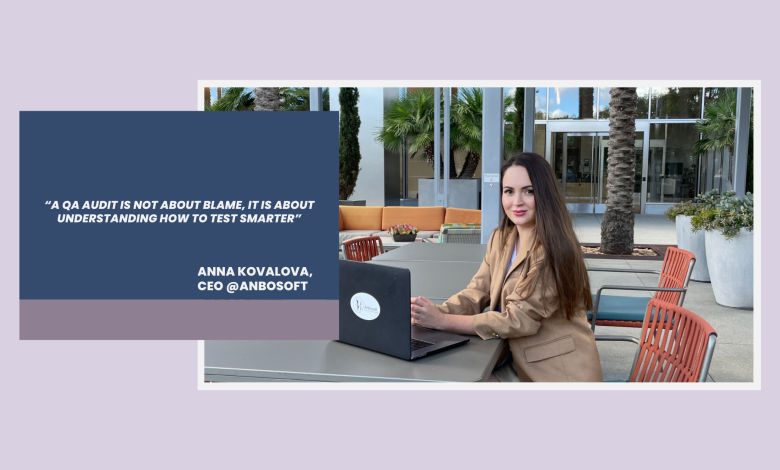
Several studies underline how much is at stake when software quality and delivery go wrong. McKinsey has reported that around 17 percent of large IT projects go so badly they can threaten the very existence of the company. PM 360 Consulting At the same time, their research on software development and generative AI shows that, when used effectively, AI can help developers complete some coding tasks up to twice as fast and improve both speed and quality of delivery. McKinsey & Company+1
That combination – high risk when things fail and real potential when AI is applied thoughtfully – is the backdrop for Anna Kovalova’s work. As co-founder and CEO of Anbosoft LLC in California, she focuses on helping teams use a structured, AI assisted QA Process Audit to understand where their testing practices are helping them and where they are quietly holding them back.
Her approach starts from a simple idea: quality is not about doing more testing, but about doing the right testing at the right time. The QA audit framework she has developed helps teams identify bottlenecks, decide where automation makes sense, and track the metrics that actually reflect product and process health.
“Quality at speed is the real benchmark,” she says. “Even experienced teams can develop blind spots – regression cycles grow longer, automation does not deliver expected value, and hotfixes become routine. A good audit makes these issues visible and manageable.”
The framework combines structured surveys with AI driven analysis. Teams answer adaptive questions about their testing practices, tools, and release cadence. AI then highlights recurring patterns and suggests potential areas for improvement. A QA expert – the human in the loop – reviews these findings and adjusts them to match the company’s size, risk profile, and goals.
This collaboration between human expertise and AI support aims to produce practical changes, not just reports. In one engagement, the approach helped a team cut regression time by half and reduce hotfixes by focusing first on low effort, high impact improvements before expanding automation.
The resulting audit reports are designed as working documents rather than one time checklists. They typically include a maturity score, an opportunity overview, a prioritized action plan, and an estimate of potential cost savings. This gives both engineers and leadership a shared view of where the team is today, what a realistic six month improvement could look like, and which steps are likely to bring the best return.
People and culture are also a core part of Kovalova’s work. Under her leadership, Anbosoft positions itself as a “safe place to outsource testing,” emphasizing clear communication, reliability, and respect for the client’s context. She supports women in tech, mentors students and veterans, and contributes to research at the intersection of AI and quality assurance. Through articles and talks, she focuses on making AI understandable for testers and encourages practical, incremental adoption instead of buzzword driven initiatives.
With more than 15 years in software quality leadership, Anna Kovalova treats QA as both a technical and a human discipline. Her long term goal is to support a future where AI speeds up and strengthens testing, testers remain central to decision making, and software quality is defined by trust, efficiency, and inclusion.



